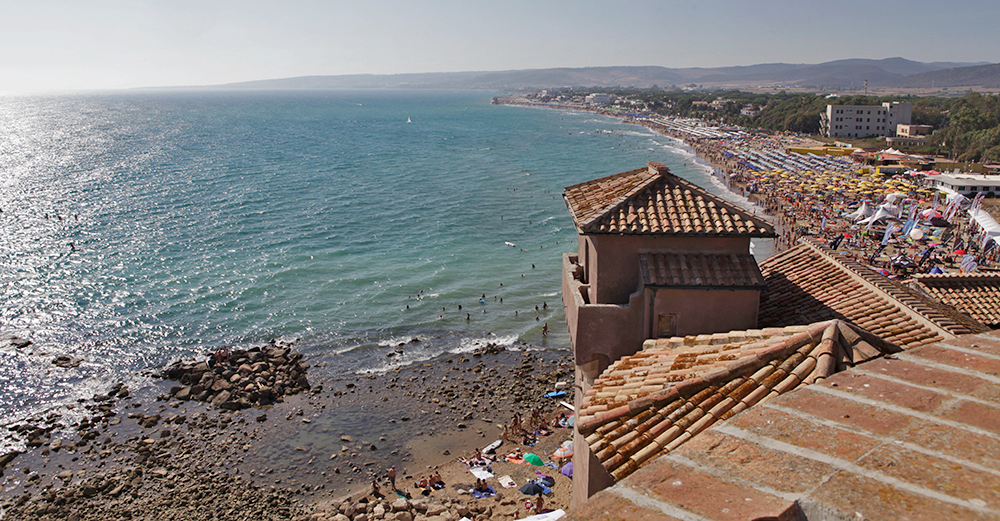
Preface by Gerard Huissen
In July 2016 I met Luca Seidenari, one the most active co-workers of our magazine at the Terme Taurine in Civitavecchia (see article ‘Looking for Centumcellae). While talking to him one of his friends was entering the room and he was introduced as a worker at another important Roman Port in the neighbourhood, called Santa Severa. This year I decided to visit that location.
Well, not every Roman port is spectacular, and this one is certainly not, but in one way or another the spot called memories. The loyal reader of our magazine must remember the movie about Alberina Vicari, called ‘The town behind a town’ we made in 1992. The film was meant to be a pilot for a series of films about mundane bathing resorts with still a historical equivalent in the backyard.have been made.
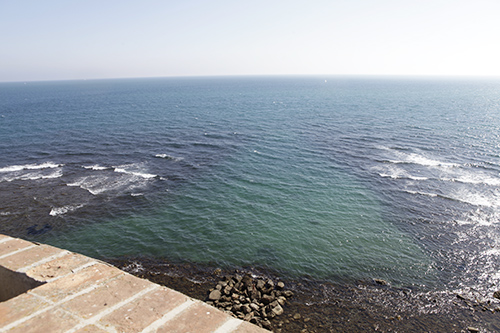
Entering the place there was a large medieval castle surrounded by hundreds of people in bikini or trunks returning, after scoring a drink, immediately towards the beach to cool down in what happened to be once the waters of a Roman Port.
From the top of the castle one could recognize below the water surface two breakwaters with a canal in between through which ships were entering the harbour.
Next to the castle two Etruscan temples have been discovered and inside the castle is a very nice museum specialised in maritime historical archaeology. Luca will tell you the whole history of this typical ‘the town behind the town’ story.
PYRGI AND THE CASTLE OF SANTA SEVERA
By Luca Seidenari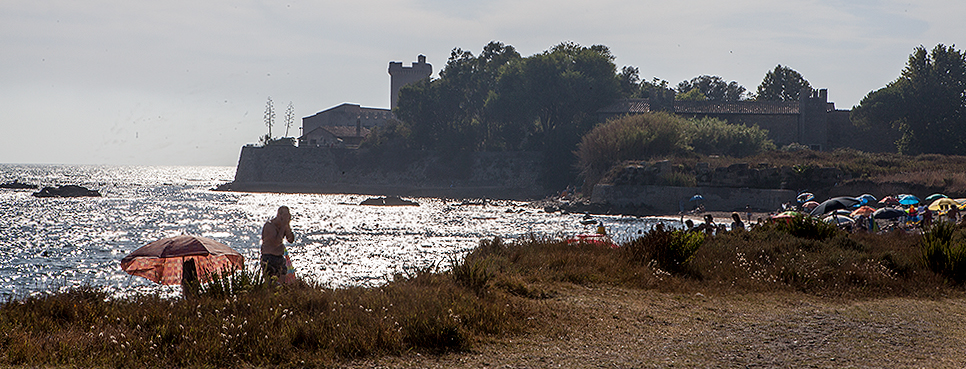
The origins
The oldest presence of man in the territory of Santa Severa goes back to the Neolithic. That is proved by some Archeological finds related to a settlement of 4000 BC, documented by the remains of huts, fragments of pottery and instruments in obsidian, a volcanic glass rock whose quarries were only in certain islands of Southern Italy. This last one attests the existence of maritime trades and contacts with people of other regions of the Mediterranean Sea. And, therefore, it also means that the area of Santa Severa was in a prominent position regarding the commercial routes of the Mediterranean and the Tyrrhenian Seas.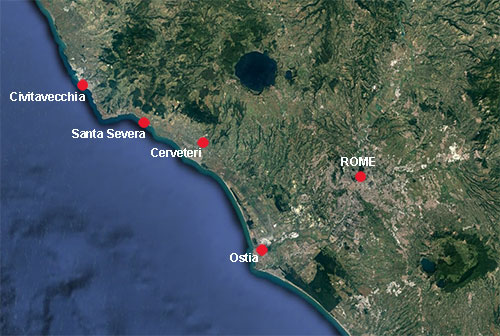
Etruscan period
This territory in the Etruscan era belonged to the powerful city of Cerveteri (Caere), which dominated the Central Tyrrhenian Sea with its three ports, including Pyrgi the main one. In fact Pyrgi was an important emporic centre for commercial trades, especially with Greece and the Eastern world. The city developed around the harbour for about ten acres: the Greeks called it Pyrgoi (the towers), the Romans Pyrgi. Yet the Etruscan name of the site is not known.
Just outside the city stood the most magnificent sanctuary of southern Etruria. It was so famous and rich that in 384 B.C. it suffered a sack by the Syracusan pirates led by the tyrant Dionysius the elder. The ancient sources tell that this plundering was very proficuous, a huge booty in gold and silver.
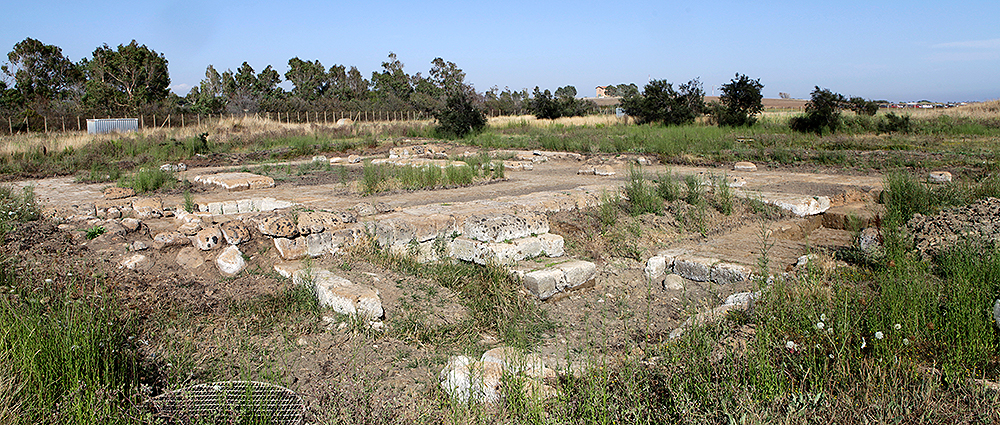
The sanctuary was composed of two major temples: one dedicated to the goddess Uni (the Roman Juno), the other one to Thesan, the goddess of the dawn, assimilated by the Greeks to Leucothea, who protected the births but also the seafarers and the sailors.
Precious decorations covered the temples' trabeations. The high relief depicting two episodes from the myth of the "Seven against Thebes", which ornated the first Temple, is considered a masterpiece of Etruscan coroplasty.
Between the two temples was an area (called C) destined to cult of Tinia, divinity of the Underworld. In this area, among other things, the archaelogists found an altar with a central hole, communicating with an underground cavity.
The southern part of the sanctuary was dedicated to the cult of Suri (Apollo) and Cavatha (Persephone). Among the objects found in the sacred area C the two famous golden plates are worth mentioning. They represent one of the most sensational archaeological discoveries in Italy after the Second World War. The two plates, which date from the 5th century BC, bear Etruscan inscriptions with the translation in Phoenician: that has allowed a very useful comparison to enhance the knowledge of the Etruscan language.
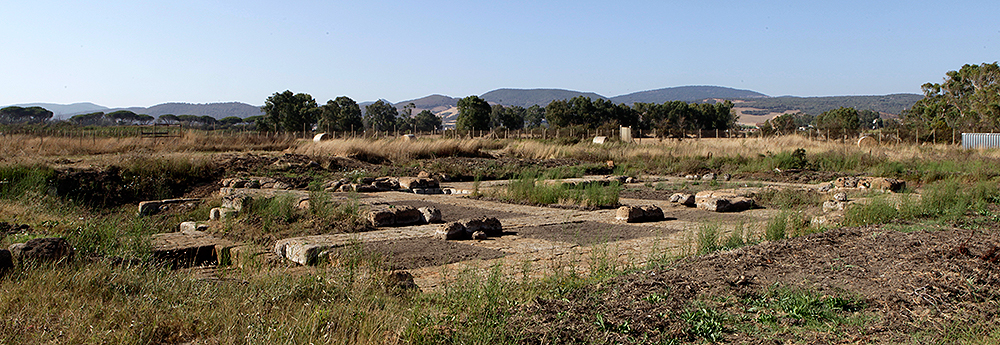
Roman period
In the 3rd century B.C. the Romans confiscated the territory to Caere, after defeating It, and settled here a maritime colony (ca. 264 BC), which supplanted the former Etruscan settlement.
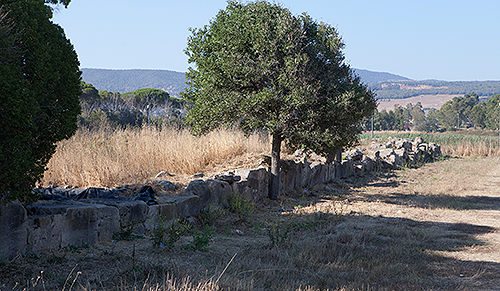
There are still outstanding remains of the Cyclopic walls.
They had four city gates and surrounded a rectangular area of about five hectares, a quarter of which is currently occupied by the medieval-Renaissance village. At the same time the port was renewed and the Via Aurelia was built to connect the new fortified centres on the Northern coast of Rome, in anticipation of the First Punic War.
The military function of the colony faded at the end of the Republican age, when the sumptuous villas of otium flourished along the coast.
The castle
The first written document of the medieval settlement dates back to the year 1068. It describes the donation made by the Count Gerard of Galeria to the Abbey of Farfa. In this document it is mentioned Civitas Sanctae Severae, with all its belongings, including the castle, the church of Saint Severa and the port. That attests the change of the name of the place during the Middle Ages, due to the martyrdom of the saint in this area.
In fact, right next to the beach of Pyrgi, according to the tradition, a young Christian girl, named Severa, was martyrized at the end of the third century, during the empire of Maximilian and Diocletian, when the Christians were persecuted.
After several passages of ownership (St. Paul's monastery, the rich and powerful families of the Bonaventura, Venturini, Tiniosi, Vico and Anguillara), in 1482 the castle became possession of the religious order of the Holy Spirit , which kept it for five centuries (until 1980). During this long period the village was used as a great farm for the production of provisions for the Hospital of Santo Spirito (Holy Spirit) in Rome.
Nowadays the complex of Santa Severa belongs to the Region Lazio, and includes some interesting museums, among which the Museum of the Sea (see pictures below)
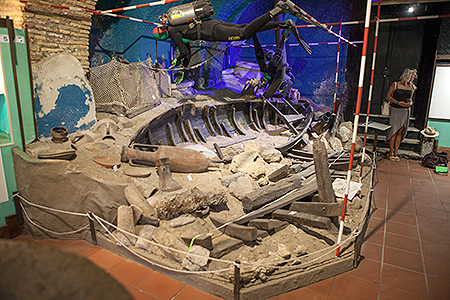
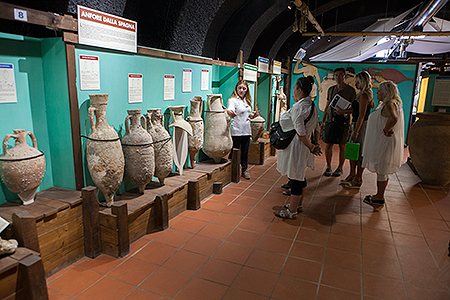
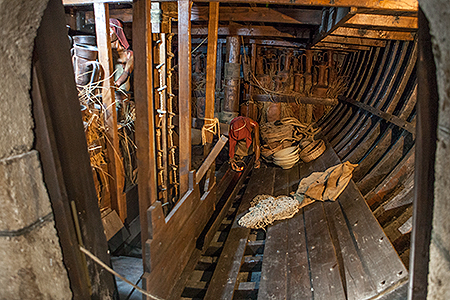






 We are committed to providing versions of our articles and interviews in several languages, but our first language is English.
We are committed to providing versions of our articles and interviews in several languages, but our first language is English.